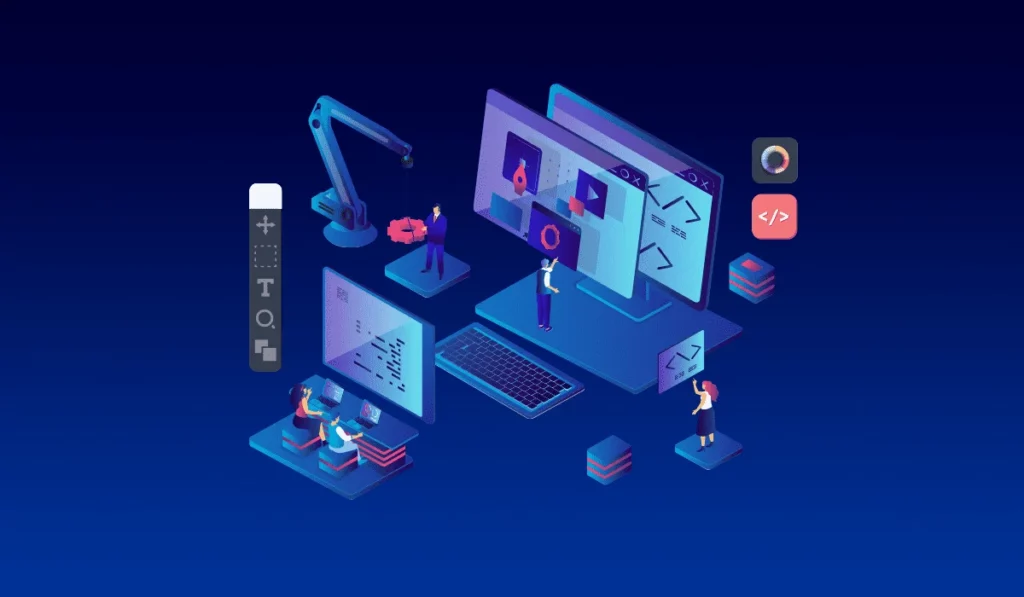Web Design and Development: What’s the Difference?

In the vast landscape of the internet, the terms “web design” and “web development” are often used interchangeably, leaving many puzzled about their actual dissimilarities. Unveiling the mystery behind these crucial aspects is essential for anyone delving into the creation of an online presence. So, let’s embark on a journey to discern the disparities between website design and development, unraveling their unique roles and contributions.
What is Website Design?
Website design is the artistic facet of crafting a website’s visual layout and user interface. It’s akin to the blueprint of a building, determining its aesthetics, usability, and overall appeal. Here’s a closer look at the key elements of website design:
- Visual Layout: Designers focus on creating visually appealing layouts that align with the brand’s identity and resonate with the target audience.
- User Interface (UI): UI design involves crafting intuitive interfaces that facilitate seamless navigation and interaction for users.
- Typography and Color Scheme: Carefully selected fonts and color palettes enhance readability and convey the desired mood or message.
- Graphics and Multimedia: Incorporating images, videos, and other multimedia elements enriches the user experience and reinforces the website’s content.
In essence, website design revolves around the aesthetics and user experience, aiming to captivate visitors and leave a lasting impression.
Understanding Website Development
Contrary to design, website development pertains to the technical implementation of a website’s functionality and features. It’s akin to the construction phase of a building, where the blueprint comes to life. Here’s an overview of the primary components of website development:
- Front-end Development: Also known as client-side development, this involves coding the elements of a website that users interact with directly, such as buttons, forms, and navigation menus. HTML, CSS, and JavaScript are the cornerstone technologies utilized in front-end development.
- Back-end Development: Back-end developers focus on building the server-side components of a website, including databases, server logic, and application functionality. Languages like Python, PHP, and Ruby, along with frameworks like Django and Laravel, are commonly employed in back-end development.
- Database Management: Efficiently managing data is crucial for dynamic websites. Developers utilize database systems like MySQL, MongoDB, or PostgreSQL to store and retrieve information seamlessly.
- Content Management Systems (CMS): CMS platforms like WordPress, Joomla, and Drupal simplify website development by providing pre-built frameworks and customizable templates.
In essence, website development brings the design to life, ensuring that the website functions seamlessly and delivers the intended user experience.
The Interplay between Design and Development
While website design and development are distinct disciplines, they are intricately interconnected, each relying on the other to achieve a cohesive and impactful web presence. Here’s how they collaborate:
- Collaborative Planning: Designers and developers collaborate closely during the initial planning phase to align the visual concept with the technical requirements and constraints.
- Iterative Process: Designers create mockups or prototypes that serve as a blueprint for developers, who then translate these designs into functional web pages, iterating and refining the features as needed.
- Responsive Design: Designers ensure that the website’s layout and visuals adapt seamlessly to different devices and screen sizes, while developers implement the necessary code to achieve responsiveness.
Conclusion
Website design focuses on the visual aesthetics and user experience, while website development involves the technical implementation of functionality and features. By understanding the roles of both design and development, businesses and individuals can collaborate effectively to create compelling and functional websites that resonate with their audience. So, whether you’re embarking on a new web project or refining an existing one, recognizing the differences between website design and development is key to success.
